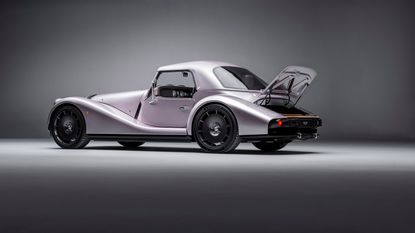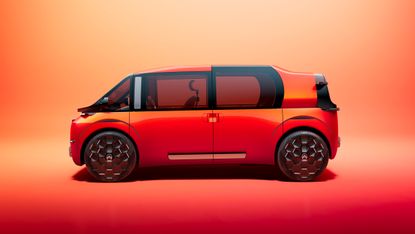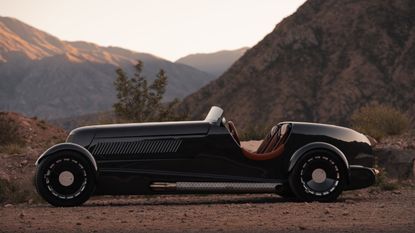Transportation
Take a considered look at the fast-moving world of transportation, from new innovations, conceptual designs to revived classics. If it moves us then you’ll find it here
-
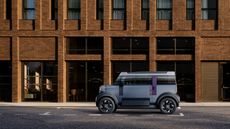
Year in review: the shape of mobility to come in our list of the top 10 concept cars of 2025
Concept cars remain hugely popular ways to stoke interest in innovation and future forms. Here are our ten best conceptual visions from 2025
By Jonathan Bell Published
-

The Bombardier Global 8000 flies faster and higher to make the most of your time in the air
A wellness machine with wings: Bombardier’s new Global 8000 isn’t quite a spa in the sky, but the Canadian manufacturer reckons its flagship business jet will give your health a boost
By Jonathan Bell Published
-
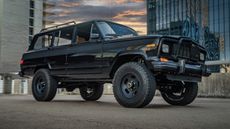
Vigilante’s 1979 Jeep Wagoneer features luxury trim, modern muscle and elevated styling
Texan restomod master Vigilante has created a new take on the classic Jeep Wagoneer, transforming the 1970s family SUV into a sleek, architectural powerhouse
By Jonathan Bell Published
-
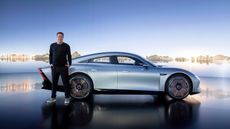
Gorden Wagener leaves the helm of Mercedes-Benz design after 28 years with the company
The German designer is stepping down from the role of chief design officer at Mercedes-Benz. We look back at his influence and impact on the world of automotive and luxury design
By Jonathan Bell Published
-
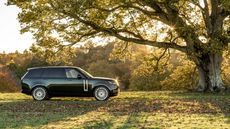
Holland & Holland's Range Rover is outstanding in its field: shoot the breeze in style
Can you spare half a million pounds for a glorified four-wheeled gun cabinet? If so, the Range Rover Holland & Holland Edition by Overfinch might be the perfect fit
By Jeremy Taylor Published
-
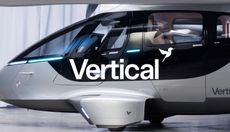
Pentagram’s identity for eVTOL brand Vertical Aerospace gives its future added lift
As Vertical Aerospace reveals Valo, a new air taxi for a faster, zero-emission future, the brand has turned to Pentagram to help shape its image for future customers
By Jonathan Bell Published
-
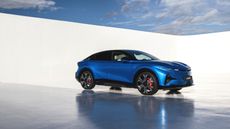
Alpine A390 GT: French, fast and fun. A sporting EV with a real sense of occasion
Alpine doubles down on its fast electric credentials with the A390 GT, the French performance brand’s largest car to date
By Guy Bird Published
-
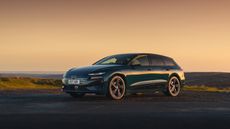
A tale of two Audis: the A5 saloon goes up against the A6 Avant e-tron
Is the sun setting on Audi’s ICE era, or does the company’s e-tron technology still need to improve?
By Jonathan Bell Published
-
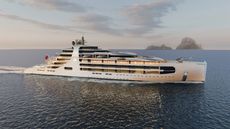
The Maybach Ocean Club is a floating members’ club for the super-rich
Mercedes-Benz Design has announced the upcoming Maybach Ocean Club, a ship-based enclave inspired by automotive luxury
By Jonathan Bell Published
-
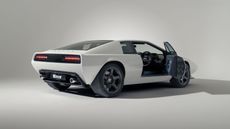
Hanker after a 1970s supercar? The Encor Series 1 elevates the Lotus Esprit to a new level
This limited-edition remastering of the dramatic wedge-shaped Lotus Esprit stops at nothing to improve and enhance the original without losing sight of its analogue excellence
By Jonathan Bell Published
-
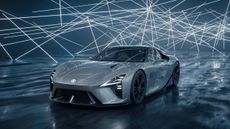
Lexus finally confirms the name of its all-electric LFA Concept supercar
Still designated a design study, the Lexus LFA Concept should be the successor to the most unlikely of all 20th-century supercars
By Jonathan Bell Published
-
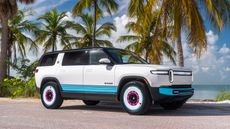
Rivian hits Miami Art Week to release R1S Quad Miami Edition, a new colour and a scent
Vivid sights and evocative smells are part of Rivian’s quest to humanise its all-electric SUVs
By Jonathan Bell Published
-
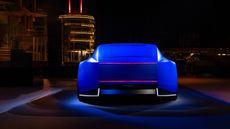
JLR is a mainstay of modern motoring luxury, but do car brands need creative figureheads?
With Gerry McGovern reportedly departing from Jaguar Land Rover, what next for the Indian-owned, British-built house of brands?
By Jonathan Bell Published
-
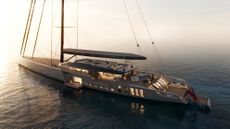
Royal Huisman brings superyacht scale to a new age of sail with the 81M Sky project
Royal Huisman’s The Sky project is a mission to build the world’s tallest sloop – we explore the technical challenges of creating a sailing superyacht
By Josh Sims Published
-

RBW EV brings a much-loved classic sports car aesthetic into the modern era
The RBW Roadster and GT hark back to a golden age of sports car design. Under the skin, these British-built machines feature bespoke all-electric running gear
By Jonathan Bell Published
-
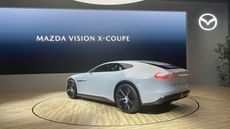
Wheels of the weird and wonderful: how the 2025 Japan Mobility Show met its brief
We bring you our selection of the ten most futuristic concepts and fascinating forthcoming machinery at Tokyo's Japan Mobility Show
By Guy Bird Published
-
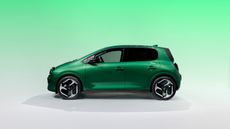
All hail the compact new Renault Twingo E-Tech – the city car is back in style
Renault continues to pay homage to its heritage by combining it with 21st-century technology. The new Twingo E-Tech is another winner
By Jonathan Bell Published
-
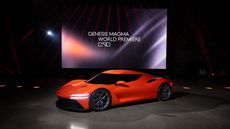
Genesis turns up the heat with its new Magma performance sub-brand
Genesis has revealed the hot new GV60 Magma and striking Magma GT Concept in its quest to own luxury performance
By Jonathan Bell Published
-

The future of off-road is encapsulated in Hyundai’s rugged Crater Concept
An exploration of the future form of Hyundai’s XRT sub-brand, the Crater Concept is designed to roam where no one else goes
By Jonathan Bell Published
-
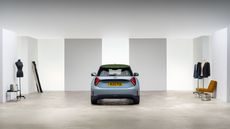
The Mini Paul Smith Edition brings the designer and the car brand together once again
Paul Smith talks to Wallpaper* about colour and his new collaboration with Mini, the latest in a partnership that stretches back over a quarter of a century
By Guy Bird Published
-
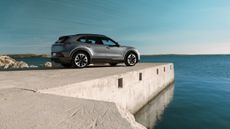
New Porsche Cayenne Electric makes a case for a sporting life with lashings of technology
The next-gen Cayenne gets its first all-electric model, a mighty SUV that’s also the first Porsche with wireless charging
By Jonathan Bell Published
-
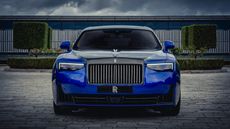
Rolls-Royce pushes pixels with this retro-game inspired edition of the Black Badge Ghost
Ready Player One? The Black Badge Ghost Gamer is a bespoke super-luxury limousine infused with the style and shape of 8-bit arcade graphics
By Jonathan Bell Published
-
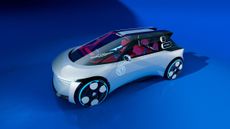
Peugeot's Polygon Concept city car of tomorrow exists in the frantic online world of Fortnite
Peugeot pitches its new design language to the gaming community with a concept car designed for virtual worlds
By Jonathan Bell Published
-

The new Bentley Supersports pares back the luxury to create a screaming two-seater
Bentley redefines its iconic grand tourer with a lightweight performance variant that strips out the trim and the tech and adds in refined dynamics and more visual drama than ever before
By Jonathan Bell Published
-

McLaren Special Operations deals itself a winner with the Las Vegas-inspired Project Viva
We delve into the world of McLaren Special Operations, discover what the deal is with Project Viva, spec our own hypercar and explore the role of the Pure McLaren experience
By Jonathan Bell Published
-
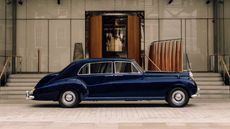
Around London in sybaritic silence with the majestic all-electric Lunaz Phantom V
Classic electrifier Lunaz has turned its skilled hands to the Rolls-Royce Phantom V. We sample the ultimate in zero-emission luxury on the streets of London
By Adam Hay-Nicholls Published
-
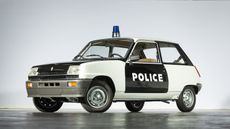
Fancy owning a piece of French automotive history? Bid in The Renault Icons Auction
Renault is paring back its substantial collection of historic automobiles by auctioning off duplicate models. We present 14 of the finest lots
By Jonathan Bell Published
